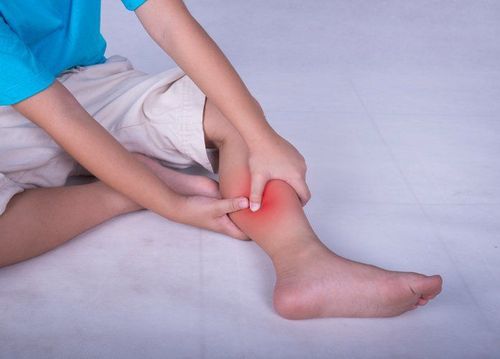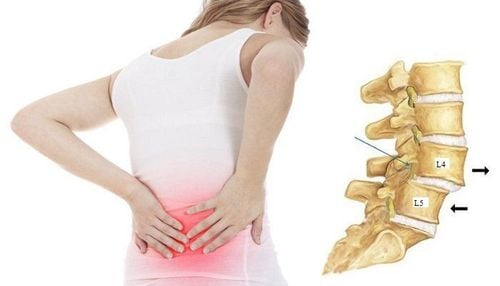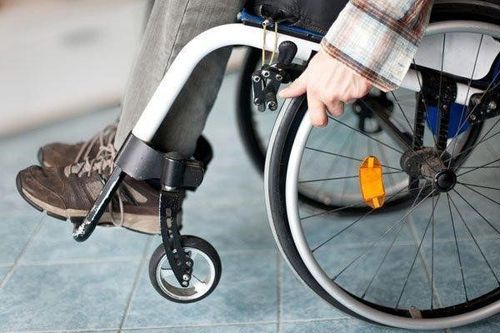This is an automatically translated article.
Question:
I fell from a car, was bedridden for 4 months, my memory is normal. In the first 6 months, the right arm can be moved, and the left arm can be moved after 6 months. Up to now, nearly 4 years, the right hand is normal, the left hand is a bit weak, the leg can't bend or lift by itself. So what should I do to be able to walk normally?
Ngo Van Duc (2000)
Answer:
To answer this question of yours, you first need to provide some necessary information such as: The diagnosis of the doctor who examined you at the time of your injury What was 4 years ago?
As you describe, the weakness and paralysis of the limbs that occur after such trauma (falling from a car) are usually caused by 2 reasons: Brain damage or spinal cord damage.
Both of the above causes lead to damage to the nerves that govern the activities of the extremities, leading to limited or partial loss (weakness) or complete (paralysis) movement of the limbs controlled by that nerve. Depending on the type of injury that originates in the brain or spinal cord, it leads to different forms of paralysis, such as:
Paralysis of a limb: Paralysis of a limb is usually short-term, especially when the patient suffers from a stroke or brain injury. , at the site of the affected nerve but avoiding being completely severed. Paralyzed limb function can be restored with rehabilitation physiotherapy.
Hemiplegia: This form of paralysis occurs due to brain damage, which can be congenital or acquired. Patients with this form of paralysis are often unable to move an arm, a leg, and half of the face on the same side to varying degrees. Many people experience several stages of hemiplegia, which begin with a stinging sensation, progress to myasthenia gravis and then escalate to complete paralysis. Arms are often affected more severely than legs and face, although patients can still walk normally despite being paralyzed in one arm. And similar to monoplegia, the severity of this form of paralysis can vary from day to day and is highly dependent on lifestyle. Lower extremity paralysis: This form of paralysis occurs in the lower extremities, from the waist down, including the legs, hips, and functions such as physiology and excretion. Each patient has a different perception of this paralysis. Although physical therapy and aggressive rehabilitation can increase muscle strength and nerve connections, it is often difficult for people to recover from lower extremity paralysis. The most common cause of lower extremity paralysis is damage to the spinal cord, which affects the function of receiving and sending nerve signals from the area below the injury site.

Tình trạng liệt chi dưới gây ảnh hưởng đến cuộc sống hằng ngày của người bệnh
Quadriplegia: Sometimes called quadriplegia, this form of paralysis begins from the neck down, most of which includes the limbs and trunk. And like other forms of paralysis, each patient has a different degree of loss of function. Quadriplegia sometimes occurs only temporarily after a person has suffered a brain injury or stroke and the body naturally regains some function during the recovery process. However, most patients have to undergo intensive and intense physical therapy treatment. Similar to lower extremity paralysis, the leading cause of quadriplegia is sports injuries such as soccer, traffic accidents, and fights. Paralysis can occur in a multitude of different ways, and each patient will respond and respond to treatment somewhat differently. In addition, there may be other sequels associated with limb paralysis such as:
Facial paralysis Loss of sensation in the muscles of the face, limbs, body Circular muscle disorder: Involuntary defecation and urination Loss or change changes in senses of smell, taste, hearing, vision Difficulty swallowing, difficulty speaking Decrease or loss of ability to concentrate, remember, reason, study and work Difficulty speaking and communicating Headache, Insomnia Or stress, mood changes, irritability, anger, depression,... Depending on the damage and different symptoms, there will be different treatment methods. Therefore, you need to see a doctor as soon as possible because the condition has also lasted for 4 years, the longer it takes, the less likely it is to recover from paralysis.
Treatment results depend largely on the efforts of the patient and family (that is, the patient must persevere in training, believe that the disease will be cured, family encouragement to be psychologically comfortable in parallel with the treatment plan). the companion and support of doctors (mainly Physiotherapy - Rehabilitation)
Answered by Doctor of General Surgery & Anesthesia, Vinmec Hai Phong International General Hospital.













